Declassified documents from the British National Archives have confirmed what was largely an unofficial rumour.
The declassified documents from the British National Archives show that former US President Ronald Reagan had offered British Prime Minister Margaret Thatcher a chance for both countries to work on the F-117 stealth fighter programme back in 1986.
The programme was given the code-name Project Moonflower. It is understood that the British Ministry of Defence declined the offer as it was still a ‘black programme’.
The later version offered to the Royal Air Force in 1995 was the F-117C. The aircraft was to be a baseline F-117A fitted with British avionics and EJ200 engines, plus a number of BAE structural components or sub-assemblies.
The F-117 was based on the Have Blue technology demonstrator and was the first operational aircraft to be designed around stealth technology. The maiden flight of the Nighthawk took place in 1981 and the aircraft achieved initial operating capability status in 1983.
The Nighthawk was shrouded in secrecy until it was revealed to the public in 1988.


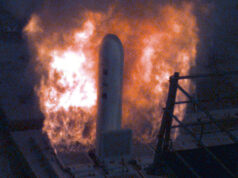




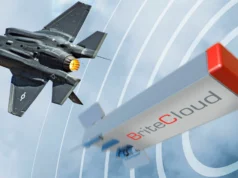
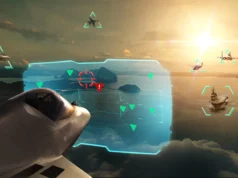
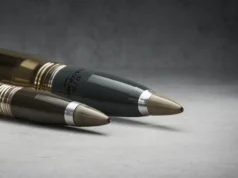
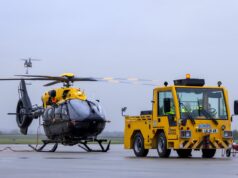


So we decided to stick with the Tornado IDS. We get the chance ground breaking technology and we turned down it favour of an outdated strategy which saw 6 tornado aircraft shot down over Iraq 90/91.
Staggeringly facile comparison, and very ill-informed. Your comments continue to be poorly thought out,Mike.
Please don’t respond if you have nothing to add to the topic in question.
Ah, so you’re suggesting we all accept the numb remarks of every buffoon going and shouldn’t put them right.
Phew!
I was, Mike, seriously why do you think the West’s only superpower had stealth aircraft at that time and no other NATO country could afford them ?
Tornado has been used successfully over many years on a variety of ops.
Your instant knee jerk reaction just doesn’t add to the reason why decisions were made at that time.
No offence, but your attitude comes across as “why can’t we have everything all the time instantly” like a spoilt child at Christmas.
Mike, are going to let this Jackass talk to you like that?
Hey, the tornado is a very multi role aircraft which is easier to maintain with a much more sturdy frame. We would have removed the tornado if it doesn’t work to the highest of standard. When working with the aircraft in Afghan it has performed admirably and with life saving performances that I wouldn’t change. The stealth isn’t necessary for the role in which it’s used. Hence the US using primarily F16s, F15s and A10s for ground strikes during the conflict. All of which do t have stealth capabilities.
This was an era that we were trying to do it ourselves and so buying the US plane would have gone against that mantra.
The funny part is that they were offering a customised version with UK parts, where have we seen that go badly wrong before… An already expensive jet, double or tripled in price by UK ‘enhancements’
I’m inclined to agree. The Phantom was a good example. Much more expensive than pure US versions and not as good.
How was a British Phantom not as good?
I understand that there were problems with the engines, that meant the UK models had a lower top speed and service ceiling…..
Yup. Never to old if your wings still fold.
Ex dog sqn liney
Tornado IDS was already coming in to service at the time. Should the whole development have been cancelled at that stage in order to spend even more money on an as yet unproved technology? Interesting to note that Tornado is very much STILL in service and doing a great job, unlike the F-117. As to the Tornado losses in Gulf War One that was rather down to RAF tactics than any fault with the aircraft itself. Once the British built ‘bomb proof’ aircraft hangers proved to be anything but the need for low-level delivery of JP233s evaporated. A quick lash up on the ancient Buccaneers and the RAF operated with complete impunity.
The Hardened Aircraft Shelters (HAS) in Iraq were made by the Germans, not the UK. They were also built to a higher standard than NATO HAS.
And no Tornado’s were lost on JP233 weapon delivery runs, they were lost on toss bombing of 1,000lbers and controlled flight into terrain.
Why would a pilot wish to do a controlled flight into terrain. That to me means a crash in which you get killed.
The tornado is not still in service… With the UK.
declined free blackhawks with every Apache too.
Tornado is a whole different game, try fitting 12 brimstone’s to an F-117.
Yes mate…. Like I have said before, politicians do not fight wars.
Four British airmen and up to four Tornado aircraft may have been lost unnecessarily at the beginning of the Gulf war because of “disgraceful interference” by a senior officer at the Ministry of Defence, the former commander of the British forces confirmed.
The senior officer alleged to of been Marshal of the RAF Sir David Craig, was then Chief of Defence Staff. The claim is made by General Sir Peter de la Billiere in a BBC1 documentary series, The Gulf War, which was aired on 9 January 1996 marking the fifth anniversary of the 1991 conflict. During the war Sir Peter oversaw the operations of British troops, sailors and airmen.
In the film, he says that the loss of some of the Tornados could have been averted if the RAF had switched from low to high-level bombing sooner.
The Tornados are formidable aircraft and since the Gulf war Mike have been upgraded from GR1 to GR4 status making them on level with 5th generation capabilities. It’s just now of course they’re on their way out given the ageing airframes, but it was too costly and a waste of resources to abandoned them for the US f117 when the tornado was a little over a decade old.
There was nothing wrong with low-level attacks as long as they were planned well in order to maintain the element of surprise. It’s when they signposted their attacks that they became vulnerable. The GR1As flew the entire war at low-level as their recce equipment was optimised for that.
Good grief
The F117 might have been great against a sophisticated enermy but how good would have been against the Taliban inAfghanistan?
The US used the F-117 in Afghanistan along with the B-2.
http://www.raf.mod.uk/history/RAFTornadoAircraftLosses.cfm
RAF report on the six losses
There were ZERO F117s shot down in the Gulf War. The only loss was the one over Bosnia, and that was due to a host of things. The F117 flew litterally thousands of missions for almost 30 years with 1 loss, and in some of the World’s most heavily contested airspace. Anyone that would not take that record is a fool. The British Tornado was an outdated aircraft the day it launched. The British losses were all in the opening days of the Gulf War and the British were forced to stop low level bombing which was how the aircraft was intended to fight. After that all British aircraft began flying at altitude and only after the US had cleared the Iraqi anti air systems.
“The only loss was the one over Bosnia”
https://www.google.com/webhp?sourceid=chrome-instant&ion=1&espv=2&ie=UTF-8#q=1997%20stealth%20crash
First (and hopefully only) plane crash I ever witnessed in person.
Thats a fair point. Noting against Tornado but F117 would have given UK a step change in capability. … one which we are only getting now as F35 moves into service.
correct.
One
I believe the remains are on display in the Belgrade Air Museum.
Mike Saul,
Even with the benefit of 20:20 hindsight, your comments are simplistic and (frankly) a bit silly.
The RAF had committed to the Tornado IDS years before, and the aircraft fulfilled a different role. The F-117A was a great but inflexible one trick pony (it was a Stealthy first day of the war delivery platform for 2,000-lb LGBs), the Tornado dropped bombs, cluster bombs, ALARM anti-radiation missiles, anti-ship missiles, JP233 airfield/area attack weapons, LGBs, Brimstone ASMs, and Storm Shadow cruise missiles, and was a competent SEAD platform and reconnaissance aircraft. The F-117A would have been a great complement to the Tornado, but not a good replacement.
Furthermore, there was no ‘outdated strategy’ in Desert Storm. No air force was able to field an all-stealth attack force, and even if they had done, there would have been some losses. Low level tactics were a costly but effective means of attacking Iraqi targets in the first few days/nights, before Iraq’s air defences were degraded, and only a handful of the RAF’s losses were directly resulting from the basic tactic – three aircraft were lost in low level attacks – two while loft bombing with 1,000-lb dumb bombs (one of these ‘ballooning’ to higher altitude for longer than necessary) and one on the exit from a JP233 attack. Three were lost at medium level.
You could question the wisdom of loft bombing at low level as a tactic in the circumstances, but that would not necessarily invalidate low level tactics as a whole.
Andy,
No F-117A was lost in Desert Storm. One was lost (and possibly a second, according to the Serbs) in the Balkans.
Webmaster,
The illustration of the F-117C that you have used is NOT your copyright. It was produced by John Ridyard for my book, ‘Jane’s Flying and Fighting in the F-117A Stealth Fighter’ published by HarperCollins and should be properly credited, and permission sought.
Well said Jon.
“Stealth” technology does not imply undetectable, just harder to detect ergo it was only a matter of time before someone did. The Yugoslavians were very clever in their methodology when they shot the F-117 down in 1999. I’ve seen claims of others but there has never been any evidence to back them up.
The only reason they were able to shoot it down was because they ran the exact same flight pattern multiple times a day
Yes they did, and it later transpired a French officer had supplied the Serbs with the flight plans for the F117 entry and exit points so on the day in question the Serbs knew exactly where the F117 was going to be at an exact time. It was then engaged with multiple missiles, one of which exploded in close proximity causing damage and the pilot ejected, but the aircraft actually flew on for a distance before crashing.
Why would a French officer do that?
I have no idea. It was known at the time that info was being leaked by an unidentified NATO officer, and a French Major was arrested and held in custody. It was the initial belief that the info was being leaked to the Russians, who then passed it to the Serbs. The Major was released at a later date due to ‘inconclusive evidence, and possibly to avoid a hugely embarrassing trial.
When and where did these shootdowns happen ????
Why make this a pissing match, we are still far ahead by atleast 20 years on air tech
A dozen F117s was a good idea. Two dozen better. A thousand sorties – one loss.
There were ZERO F117s shot down in the Gulf War. The only loss was the one over Bosnia, and that was due to a host of things. The F117 flew litterally thousands of missions for almost 30 years with 1 loss, and in some of the World’s most heavily contested airspace. Anyone that would not take that record is a fool. The British Tornado was an outdated aircraft the day it launched. The British losses were all in the opening days of the Gulf War and the British were forced to stop low level bombing which was how the aircraft was intended to fight. After that all British aircraft began flying at altitude and only after the US had cleared the Iraqi anti air systems.
The F-117 was shot down not over Bosnia but over Serbia (then Yugoslavia). The US have also admitted to a second F-117 being damaged by an SA-3 GOA over Yugoslavia. For several years during the 2000’s the USAF website had the details in their timeline for 1999.
‘Jun 9, 1999 Operation Allied Force ended. More than 800 SAMs were fired at NATO aircraft, but only one F-117 and one F-16 were downed. Another F-117 suffered minor damage from a SA-3 that exploded nearby and two A-10s were damaged by anti-aircraft artillery fire. During the campaign, 35,219 sorties were flown, 16,587 non-precision guided missiles and 6,728 precision guided missiles (23,315) were dropped.’
I was interested in the serial number of this combat damaged F-117 and submitted a Freedom of Information Act (FOIA) request during 2011. Five documents were found in the search but all were classified and the FOIA closed. Case 2011-05080-F
It was not Yugoslavia then. Serbia was Serbia after the break up of Yugoslavia some 7 years before the F117 was shot down
The initial phase of the 1991 Gulf War was at low level for many of the players and was planned for three days. F-111s, F-15Es and even B-52s were in those initial days flown at low level to strike targets. A number of B-52Gs suffered combat damage at low level. One F-15Es was lost during a low-level mission near Basra. Again during this low level phase other Coalition aircraft suffered damage. One French Jaguar returned with its tail shredded.
After the initial part of the low level phase CENTAF ordered the switch to medium level operations. Details of the low level phase were highlighted in Operation Desert Storm – Evaluation of the Air Campaign – General Accounting Office – House of Representatives.
Major James Riggens, USAF also highlights the initial low-level phase in the following.
‘Brilliant Attack: The Need For Autonomous Standoff Weapons in Airfield Attack Missions’
See online pages of ‘F-15E Strike Eagle in Combat 1991-2005 by Steve Davies’
Some references to the initial 3 day low level planned phase.
F-15E
‘On the first night of the war there were 21 F-15Es that went into Iraq. The original plan was for 18, but three more were added near the start time…… Once the refuelling was completed , we headed north and descended to low level…. We were all on the Terrain Following Radar at 200ft in radio silence – the pilots were hand-flying the TFR steering while concentrating on the FLIR picture in the HUD …..
B-52G
‘On 17 January 1991, seven B-52Gs, known as the “Doom Flight”, took off from Barksdale AFB in Louisiana to help kick off the air campaign. They performed a flight that lasted 35 hours and took them almost halfway around the world to launch 35 CALCMs and then go back home. The routes of the missiles were planned so that they would impact almost simultaneously, and 33 of them hit their assigned targets. That same day, the B-52G followed up this strike with the first low-level attacks conducted by the type after decades of training. Buffs swept into Iraqi airspace at an altitude of 90 meters (300 feet) to pound four airbases and a highway.
With Iraqi air defenses disabled, the B-52Gs then returned to high-altitude bombing, with three-ship formations pounding Iraqi troops concentrations in Iraq with 340 kilogram (750 pound) bombs and cluster bombs. The B-52 performed 1,600 sorties in the Gulf War and dropped 22,725 tonnes (25,000 tons) of munitions.’
http://www.faqs.org/docs/air/avb52_2.html
Account by EF-111 pilot on 17th January 1991 providing the jamming for strike packages. He highlights the following ’10 F-111Fs and 2 Mud-Eagles (F-15Es) were coming in on the deck against two different targets.’
Operation Desert Storm – First Wave to Iraq
by Ike Sweesy, EF-111 Flight Lead, 390 Electronic Combat Squadron, USAF, Ta-if, Saudi Arabia
https://www.flickr.com/photos/jack9999p/2207997974
Incredible really.
We will always be behind the US.
They simply have a bottomless pit of cash for defense. That’s our problem as we don’t.
We never replaced the vulcan long range bomber.
Instead our tornados flew from the uk and Cyprus to bomb Syria because we have no carrier.
I think we should have at least a fleet of 3-6 long range heavy/fast bombers now.
Anyone read the article on the death trap Ajax light armoured vehicle we’ve invested 3.5B in while the Russians build fully automated machines.
Why is Ajax a death trap?
There was no other stealth losses apart from F-117 serial 82-806 in Yugoslavia. The wreckage footage you are referring to was from that loss. There was no other footage of stealth aircraft shown on the news.
Tornados are great for the job we are using them for, which is bombing targets in non-contested airspace, but are extremely weak when it comes to contested airspace. They were designed to fly low and fast in hope of avoiding AA fire, and yet this proved not to work in the first iraq war.
Luckily they will soon be replaced with F35’s which will hopefully be able to operated in contested air space, since even with the typhoon we are stuck, since we have no electric warfare support missiles etc anymore.
[…] the past couple of days, several sources have reported on the fact that in 1986, the US President, Ronald Reagan, offered Britain the […]
Difficult to compare the two aircraft really. Each have their pros and cons and I highly doubt that we could have bought the Nighthawk in place of the Tornado in its entirety.
Performance wise and weapons carrying capability the Tornado wipes the floor with the Nighthawk particularly in the latest GR4 specification.
Its all down to what you want to achieve.
The Nighthawk for example could not do the job of the Tornado in the GCAS (close air support role) as it can only carry two bombs…. and as it has poor external visibility (behind and above) and with no air-to-air self defense capability it is somewhat restricted to high altitude by day in secure airspace or at night using the cover of darkness.
Interestingly The Nighthawks that flew some of the opening strikes in the Gulf war didn’t go in without the EF-111 SparkVark to provide electronic warfare. (ironically it looks a bit like large fat tornado) So was the stealth as good as the Americans made it out to be or was the poor speed, maneuverability, lack o self protection and pilots visual situational awareness considered a vulnerability. Interestingly enough the EF-111’s were retired in 1998 a year before the Serbs got the drop on Nighthawk 82-0806 during the Kosovo Conflict.
Although I like the sentiment of an upgraded Vulcan I always thought we should have bought a few surplus B1 bombers form the Americans and given them the British innovation to create a seriously competitive long range heavy strike platform. Lots of people use the British variant of the F4 Phantom as an example of when we ruined a good aircraft but then you look at the Apache AH1 and its far better than its American cousin.
[…] the past couple of days, several sources have reported on the fact that in 1986, the US President, Ronald Reagan, offered Britain the […]
To an early post, we have a huge history of taking foreign frsframes for our military and kitting them out with our own stuff – ships, rifles, Phantom, Sea King, Wessex, AH64, Chinook, Polaris.
We just want platforms for our tech, I rather imagine Reagan was not as dumb as people portray him and wanted us to help on the tech, we came up with the original delta wing aircraft and didn’t want tail fins on them, long before the F117 or B2.
Though just makes me sad thinking about the magnificent TSR.2 that was cancelled in 1965! And how the UK by way of RAF squandered the magnificent potential of the Buccaneer S.2. If only they’d bought more and done a major upgrade in the 1970s. No real need for the IDS Tornado!
[…] Recently declassified documents show that the US had offered the UK work on the F-117 stealth programme back in 1986. – Read full story at Hacker News […]
I have to ask how would it have been possible for the EJ200 engine to have been used on a British version of the F-117? The engine was not in existence at the time. If they had said the RB199, non-afterburning version, then it would be more accurate.
As it is, the issue with the F-117 was that it was a 1st gen stealth fighter. Much of the technology for it was never tried before, and proved to be not as durable. It was also a one trick pony.
The fact is the Tornado is STILL in active service with at least 3 Air Forces, whereas the F-117 has been retired from service. AND, the Tornado in RAF service is to be partially replaced by the 3rd gen Stealth fighter, the F-35, with more mature Stealth technologies.
The very fact that they were offered by the US is a good thing. We had already purchased the Phantom and the UK had given the design of the Harrier to MD in the US. This set the tone for the collaboration, the 117 was tested in the UK in 1986 with the loss of 1 of a flight of three aircraft that were sent over. This established to the UK that it was not as reliable a package in the new era of fly by wire and non-aerodynamic flight as they would have liked. It also highlighted that although UK main defence radar could not identify it, the UK Rapier SHORAD systems could, not only detect it but get a radar lock on it. This information may well have swayed the senior command elements responsible for procurement.
An F117 was lost in the UK?
Source please?
It may have been expensive, but the UK could’ve offset part of it it by purchasing the F15C in lieu of the Tornado ADV.
And I don’t think anyone is suggesting the F117 would have replaced the Tornado IDS, simply supplemented the RAF’s strike with a stealthy salient. If the US had plans for a wing of them, one could imagine the RAF employing a squadron of them. In the mid-80’s, there was no sign the Cold War was going to evaporate before their eyes before the end of the decade, so a US/UK force of 100+ F117s might have been formidable.
if we didn’t go for the osprey theres no way the u.k would have paid for this machine. the amount f 35 is costing is high enough.
Does the document contain any info on what happened to Lampyridae?
Don’t forget an f117 was shot down in the Bosnia conflict
I could swear this aircraft flew over me, very low, in autumn 1981 when I was walking the dog alone along the shore at Ardkinglas, at the head of Loch Fyne, Argyll. It was black and almost silent as it approached me from behind heading up the loch. It flew right over me. When I told people about it they said I was mad. This included my military relatives!
I get it’s a different aircraft with it’s own role but it is a shame we stuck with tornado and locked in with the Germans for the aircraft and typhoon just to rip up the defence pack and have no dedicated bomber. But to be fair would’ve cost an absolute bomb for a few airframes, gutted never happened though.